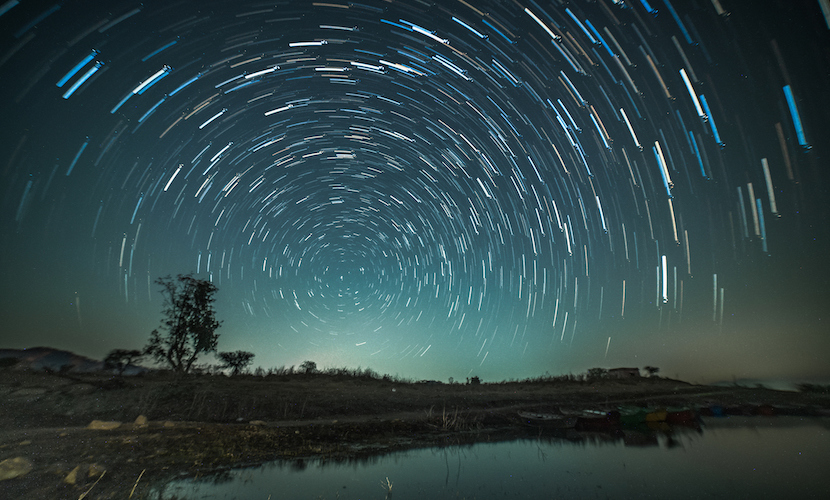
So, did you manage to see the Northern Lights in February? For a couple of days at the end of the month, the Northern Lights – properly known as Aurora Borealis – were visible across various parts of the UK.
The Northern Lights are caused by geomagnetic storms which cause the Aurora. These storms go through an 11-year cycle relating to the sun, and Northern Lights displays are strongest around the period of greatest solar activity – the solar maximum. The next solar maximum is expected in 2025 so we might expect to see more Northern Lights displays over the next couple of years.
Astronomical events such as the Northern Lights can make fantastic photo opportunities. But unless you know they are happening, you could be caught unawares.
In this article we take a quick look at:
There are two types of astronomical events throughout the year : regular and one-off. Although you may be more interested in the one-off events, don’t overlook the regular ones too as they can make some stunning photographs.
Here are some of the regular and one-off events you need to look out for:
The main two regular astronomical events are full moons and new moons.
The full moon occurs monthly, when the sun and moon are aligned on opposite sides of earth, and 100% of the Moon’s face is illuminated by the sun so it can be clearly seen. Full moons all have their own names, which derive mostly from the names of Native American tribes.
The names and the dates you can see full moons in 2023 are:
Some full moons also have additional properties which make them even more spectacular:
The full moon occurs monthly, when the moon passes between the earth and the sun. The surface of the moon appears dark because the side that is illuminated by the sun is facing away from Earth..
The dates you can see new moons in 2023 are:
As well as these regular astronomical events, we can also expect to see some exciting one-off events during 2023.
We have already referred to the Northern Lights, and it is possible that we may see them again, particularly because we are drawing closer to the solar maximum. The Northern Lights season begins in mid-August and continues until early April, and the best time for spotting them is usually the beginning and end of the season. So keep an eye on the news to see if they will be visible again in the UK at any stage.
A meteor is a flash of light that occurs when a meteoroid – dust particles or fragments from a comet or an asteroid – enters the earth’s atmosphere. This flash of light is often called a shooting star. A meteor shower is when a number of meteors are visible together in the night sky.
Meteor showers during 2023 include:
There are two types of eclipse – solar and lunar.
Eclipses during 2023 include the following.:
However they may not all be visible from the UK.
So if you want to photograph some of these amazing phenomena, here are five quick tips to help you do that.
It can be very difficult to get really good pictures of astronomical events, or the night sky in general. But a few pointers to get you started are:
Always be aware of the position and brightness of the moon. If you want to shoot a full moon, the best time of day to do this is dusk, otherwise the contrast between the moon and night sky may be too great. If you want to photograph the stars, either just before or after a new moon is a good time for the same reason.
It can be difficult to locate clear dark skies, particularly in a built up area, so you may need to go to an area of open land away from street and other artificial lighting. You can then focus on composing the shots you want to take without additional distractions.
Don’t just point and shoot, but take time to compose your shot. Think about how to position the most important elements of your photograph : one useful concept here is the rule of thirds, which we discuss this more in our guide article Want to learn about photography? Start here.
If your camera has a manual setting, use this as it will give you more control over the amount of light coming into your camera and also how well you are able to focus. Experiment with the so-called exposure triangle, which is the balance of three camera settings : ISO, shutter speed and aperture. For more information, check out the guide article we mentioned – Want to learn about photography? Start here.
One of the great things about digital photography is that you can edit the photographs afterwards. Whilst you don’t want your photos to look over-edited, you may find that night photography results in a lot of “noise” – such as a grainy or distorted appearance. But by skilful use of a photo editor you can remove this to achieve a better quality result. Our guide The Best Photo Apps of 2022 is a useful starting point to find out about photo editing.
We hope that this article has given you some helpful information on astronomical events to look out for in 2023 and how to have a go at photographing them.
And if you do get some good shots, why not show them off with fabulous metal prints from Print Your Memory? You could even hang them outside as a reminder of the vast universe of which we are part.
Check back here soon for more lifestyle and photography tips from Print Your Memory.

Copyright 2025 © Print Your Memory. All rights Reserved.